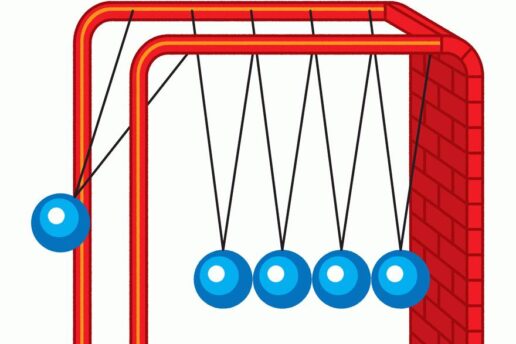
Have We Come to the End of Physics?
Skeptics worry about the future of the field, but opportunities for new discoveries abound.
“Physicists, bewitched by mathematical beauty, are failing to solve new problems.” “High-class
physicists no longer care about physical reality—nor should they.” “Science is over.”
Those are simplified but not entirely misleading summaries of recent books by Sabine
Hossenfelder (“Lost in Math”), Richard Dawid (“String Theory and the Scientific Method”) and
John Horgan (“The End of Science”), respectively. I get asked about these books and their
dismal messages frequently. For theoretical physicists they are a kind of reproach, since they
argue that today’s physics has gotten itself into a dead-end.
But they disagree in their descriptions of the problem. Ms. Hossenfelder argues that physicists
need to pay more attention to reality, Mr. Dawid that they can safely ignore it. Mr. Horgan,
meanwhile, thinks that physicists’ time is past and they should do something else instead.
What’s going on here?
Opinions may differ about the current health of physics, but no reasonable person can dispute
that it has been a hugely successful enterprise. Without revolutionary 20th-century
breakthroughs in quantum physics and relativity, modern technology—including transistors,
lasers, GPS, nuclear power and much more—would be literally unthinkable.
In the latter part of the 20th century our theoretical understanding reached a very high
plateau. The so-called Standard Model offers complete and well-tested equations for the
behavior of ordinary matter under ordinary conditions (allowing a very generous
interpretation of the word “ordinary”).
The theoretical framework of the Standard Model was in place by the 1970s. This body of
understanding predicted and enabled spectacular new discoveries and observations, notably
including the Higgs boson and gravitational waves. It is a pinnacle of human achievement.
But this grand success is bittersweet. In earlier times, research that added to or changed the
theoretical foundations of physics also had practical uses and benefits. Today, however,
discoveries in fundamental physics are unlikely to have a significant impact in engineering,
chemistry or biology, precisely because we already have well-tested foundations that seem
more than adequate for those applications. The physical principles that empower 21st-century
technologies were all known by the 1950s.
When you have reached a high plateau, ascending still higher gets more difficult. Yet glorious
opportunities remain. We can apply our existing physical knowledge to make ingenious and
useful things, like computers that leverage the richness of the quantum world to store and
manipulate information more effectively. And important theoretical questions remain to be
answered. For instance, we still haven’t got a clear picture of what most of the universe,
measured by mass, is made of.
My hero Richard Feynman joked that “Einstein was a giant: His head was in the clouds, but his
feet were on the ground. Those of us who are not so tall have to choose!” But I think this is a
false choice. Really, the plateau we’ve reached is a good place to be. In fact, physics is especially
exciting these days, because we’re learning how to use our understanding of “ordinary” matter
to make machine assistants—computers, sensors and drones—that will amplify our thoughts,
do useful things and go reconnoitering in all directions.
Originally appeared on July 5, 2019 on The Wall Street Journal website as ‘Have We Come to the End of Physics?‘
Frank Wilczek is the Herman Feshbach Professor of Physics at MIT, winner of the 2004 Nobel Prize in Physics, and author of the books Fundamentals: Ten Keys to Reality (2021), A Beautiful Question: Finding Nature’s Deep Design (2015), and The Lightness of Being: Mass, Ether, and the Unification of Forces (2009).